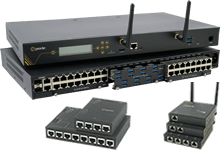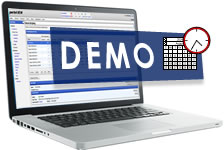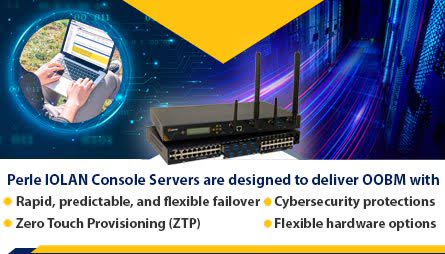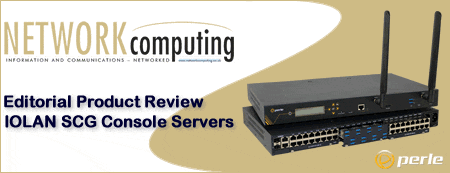Out-of-Band Management: The need in Healthcare Environments
Implementing Remote IT Infrastructure Management in Hospitals and Medical Offices
When Congress passed the Health Insurance Portability & Accountability Act (HIPAA) it was the most comprehensive piece of legislation ever passed to reform health care transaction and administrative information systems, limit fraud and abuse, and protect confidential patient information. It is now standard for every government in the world to mandate that individuals, organizations, and companies who maintain or transmit health information:
- establish technical safeguards to ensure the integrity and confidentiality of the information
- protect against any threats to the security or integrity of the information
- prevent unauthorized use or disclosure of the information
What challenges are unique to Healthcare IT Networks?
Health care providers that store patient data electronically or transmit health care information electronically are required to comply with data protection standards. These regulations set the standard for the health care provider, specifically in regard to the security of digital networks that are used to transmit patient data. The medical world relies on digital communication systems and the information stored within. It is imperative that the healthcare networks used to transmit and access medical data is not open to secutity weaknesses and has a reliable network management technology.
Healthcare providers would find it impossible to work without constant access to their network computers or enterprise-wide systems.The ability to monitor and manage these networks and keep them up and running is pivotal to meeting compliance for the transfer of information among health plans. The responsibility to ensure that healthcare providers have faultless access to their systems is placed on system administrators. Not only must these system administrators ensure that servers supplying mission critical applications are functioning, it is also their responsibility to ensure that the entire network connecting the data to a multitude of widely dispersed remote users remains functional. When networks crash, productivity does too and the longer a network is down, the greater the impact on patients.
Out of Band Network Access Diagram
The stakes are high to maintain both availability and performance of the healthcare providers network, regardless of how widely dispersed the network infrastructure is. Generally, it is becoming harder to find technical expertise with the necessary skills and resources to administer such systems.The issue becomes how to expand the capabilities of network management personnel within the healthcare provider to better maintain the variety of network infrastructures presently being deployed, and to minimize and possibly avoid network downtime and performance loss.
How does Out-of-Band Management solve these challenges?
When a Network Administrator needs to monitor, manage, troubleshoot, or re-boot critical IT assets, they will generally access the devices directly over an Ethernet network. However, when 24/7 uptime is expected this single point of access is not enough. Given that the network administrator is generally off-site, or simply in a different building, they need a secure way to remotely access the USB, RS232/422/485, or Ethernet console management port of every device on the network. This is accomplished via a secure dedicated alternate access method into the IT network infrastructure.
The primary benefit of an out-of-band management interface is its availability when the network is down, a device is turned off, in sleep mode, hibernating, or otherwise inaccessible. OOBM can be used to remotely reboot devices, like routers, switches, firewalls, servers, power, storage, and telecom appliances, that are powered-down or have crashed. This preserves 24/7 uptime of the backbone communication framework for the healthcare provider. While software management tools can be used for performance monitoring, and some remote troubleshooting, they only work when the network is up. During system or network outages, a Console Server is a single hardware solution that provides secure OOBM to monitor IT assets and devices from multiple vendors. The Console Server gives administrators access to multiple USB, RS232, or Ethernet console management ports from anywhere, anytime, and any platform, as if they were locally connected through a direct connection.
Console Servers also maximize system administrators' productivity. A single interface provides them with simultaneous connectivity to multiple appliances and system consoles from any location. Most Console Servers offer Port Buffers of varying sizes to ensure data from the attached devices is not lost. Without Port Buffers, any data sent from a device, while an administrator is not attached, is lost. With Port Buffers this data is captured and can be viewed later to aid in problem diagnosis.
As an added benefit, Console Servers can be used to network enable devices such as neo-natal monitoring systems, printers, laboratory equipment, blood analyzers, autoclaves, bedside monitoring devices, and video equipment that only have a console management port but no Ethernet port. This enables doctors, nurses, and lab technicians to access the device and data over the network.
Dig Deeper
What do users like about Perle IOLAN Console Servers?
Above all, we are impressed by the stability of the IOLAN Console Servers during operation. As far as I can remember, the IOLANs have been running without a reboot ever being necessary. We are very satisfied.
- A member of the BITS Network Team.
OPUS::L developers were especially impressed with the high reliability of the Perle IOLANs. We simply saw far less failures with Perle than with other products.
- Stephan Geldsetzer, Head of Purchasing at OSM.
When we first start building a new room, we have very little connectivity, but we still need to get switches racked and configured. By placing a Perle Console Server in that room, we can get gear racked and powered immediately. We then configure everything from our desks instead of out on the data center floor with a laptop.
- John Progar, Network Engineer with Rackspace Hosting.
Perle gives me everything I need for centralized management with no annual license fee and no additional hardware.
Perle's cloud-based Centralized Management Solution puts all your network and IT infrastructure into a single application and provides secure reliable access and visibility during normal operations and critical network failures.
Our customers’ security is a top priority for us. We picked the Perle unit because it offered the port density we were looking for and provided enhanced security features such as SSH with no expensive add-ons.
- Fred Chagnon, Systems Administrator for Allstream Internet Services & Infrastructure.
Perle’s IOLAN SCG is the perfect solution for support staff that need always-on remote OOB access to their core network devices. The appliance is easy to manage, its modular design makes it very flexible and its tough security measures allow access to be strictly controlled.
-Dave Mitchell of Binary Testing.





